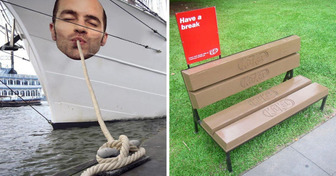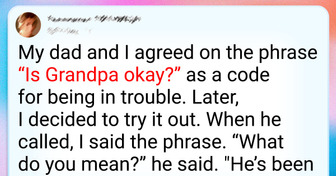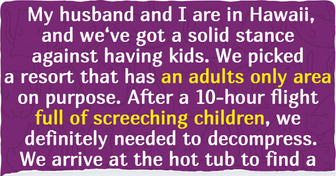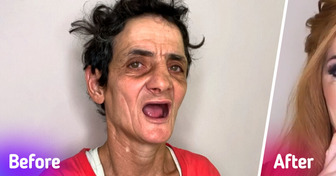18 Funny Kids Whose Parents No Longer Need to Go to the Circus

Cleaning is undoubtedly one of the most annoying and boring house chores for many of you out there. Most of the times, people are not aware of the right way to clean things easier and that’s why it seems so hard for them. There are always the best and worst ways to clean something and we are always looking to make your life easier.
If you have tiles in your bathroom wall, chances are that you are struggling with grout and soap remnants. What you can do is apply some white non-gel type toothpaste on the affected areas and scrub them with a toothbrush. After finishing your task, you can take a cloth and wet it with water and dish soap. Rub it all over the tiles and wipe away all the toothpaste residue.
If you’re not a fan of using chemicals while cleaning, or they run out when you urgently need to clean your bathtub, this advice is for you. To remove dirt and make your bathtub smell better, take a quarter of a grapefruit, dip it in sugar, and wipe the surface of the tub with it. Sugar, in this case, works as an abrasive agent that, when combined with acid, gets rid of dirt perfectly.
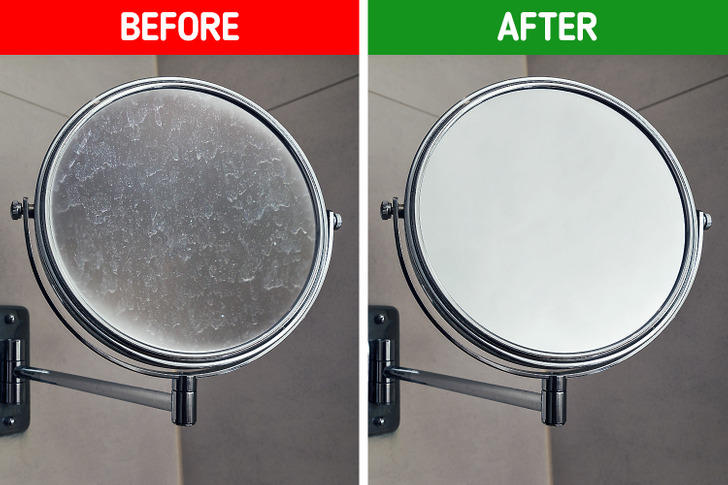
If the mirror in your room isn’t too dirty try wiping it with a wet microfiber cloth, and then right after with a dry microfiber cloth. But, if you have a heavily stained mirror, try using a homemade cleaning solution. Mix 1/2 cup of distilled water, 1/2 cup of white vinegar, and one tablespoon of corn starch in a spray bottle and shake it, so the ingredients get combined. Spray it and wipe it with a microfiber cloth.
❗️Remember to not clean it with circular movements if you want to have a shiny mirror with no stains.
This tip can be useful when you don’t have time to run to the store for more cleaner. All you need is some regular white toothpaste (not gel) to make your bathroom sink shine. Use a damp sponge to scrub it clean.
Because toothpaste is a mild abrasive that is used to remove plaque from our teeth, it can do wonders for cleaning. Next time you drop some in your sink you can give it a quick clean right away, instead of washing it down the drain!
If the stove has a lot of cooked-on stains, spray it with oven cleaner and put plastic wrap over it. This will prevent the oven cleaner from drying. After a couple of hours just wipe it with a clean cloth. Finish it with a stove polisher and it will look like new.
If you have showerheads covered with limescale, just put them in a glass full of vinegar for no less than one hour. Scrub it with the hard side of the sponge and wash it with water.
Mildew can start to grow in damp and unventilated areas of our houses, like bathrooms, basements, and around our windows. To remove the mildew, mix 1 cup of baking soda with water in a spray bottle. Spray the mixture onto the mildew and leave it for 5 minutes. Scrub it down with a sponge or brush and leave it to dry completely. Repeat as many times as necessary.
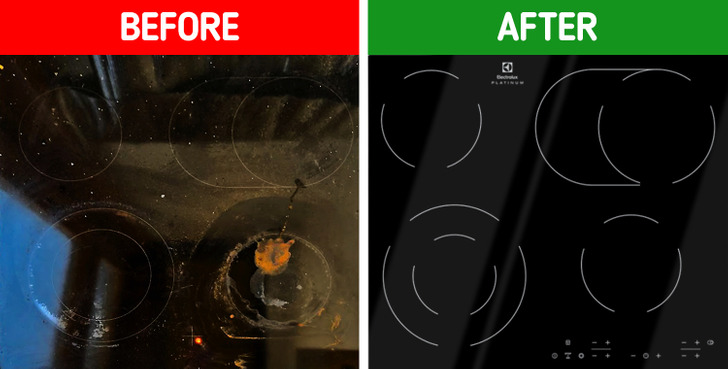
Cooked-on food stains on the induction stove shouldn’t be a problem from now on. Just apply dish soap and baking soda to the stove. Scrub it and clean them with a clean cloth. If there are stains left, use a scraper tool to scrape the stove further. You can do this by gently pressing the scraper in the middle, directly on the surface. Move it back and forth, without any sharp change in direction.
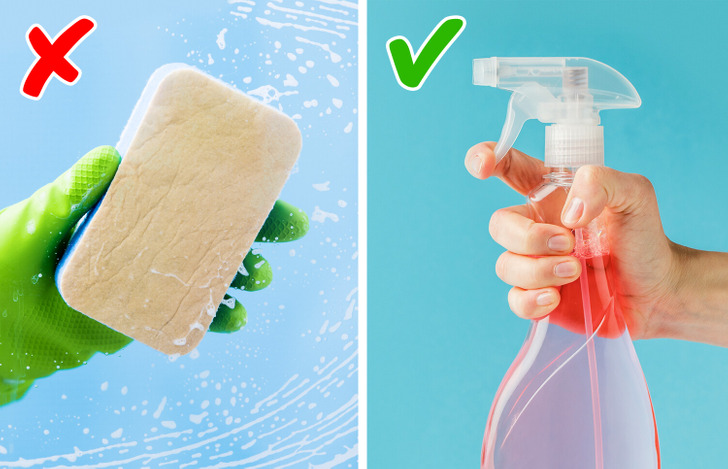
You can save yourself plenty of time when you use a spray as surface cleaner instead of scrubbing the area. Just walk into a room and start spraying all the surfaces that you can from the left side to the right side. Then, go to the next room and repeat the same thing without wiping anything away.
Once you have finished with all the rooms and the product was left long enough on the surface to absorb everything that shouldn’t be there into a puddle, go to the first room you sprayed and start wiping away. This will save you so much time while leaving all your surfaces clean and shiny without the fuss of scrubbing.
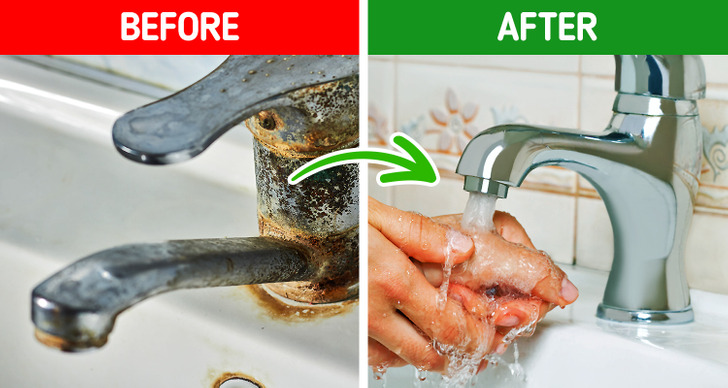
Wipe a damp cloth, soaked with warm water, over the faucet to remove the dirt. Mix 1/4 cup of salt and 2 tbsp of lemon juice to form a paste. Spread it over the corroded area on the faucet. The paste should stay for around 2 hours. Scrub the faucet afterward to remove the stains. Rinse the paste from the faucet. If there is any corrosion left, you can repeat the same process until it’s all gone.
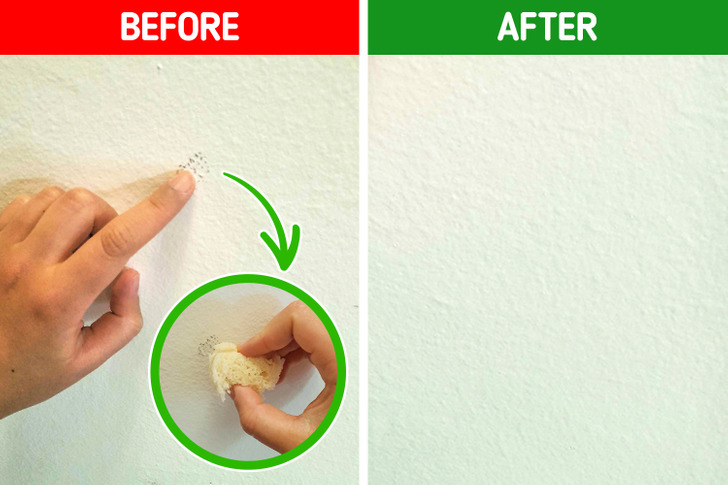
Use bread slices to remove unwanted fingerprint stains from your walls or wallpaper. The spongy surface of bread is excellent for erasing smudges from walls, and the gluten absorbs the dirt and stains. Don’t rub harshly because the bread can break into crumbs.
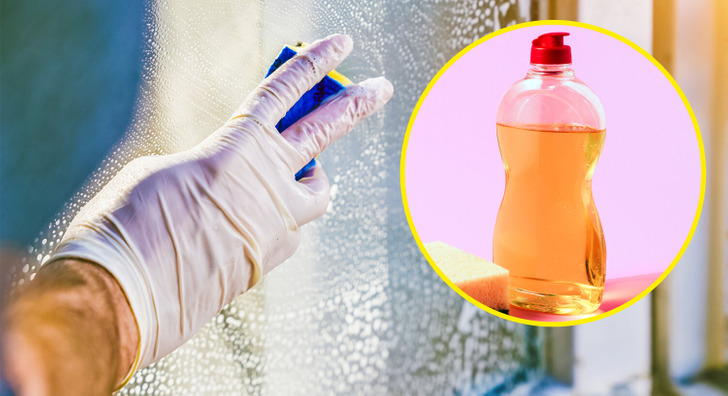
Instead of getting a glass cleaner, use dish soap instead. Dish soap can leave sticky surfaces crystal clear and it gets rid of scale build-up on bathroom windows and mirrors better than glass cleaners. Dish soap was invented to clean food off of plates, glasses, cutlery, etc, and to leave them extremely shiny and looking brand new.
This is because it has detergent molecules that, when dissolved with water, create a form of a supermolecule that makes any dirt, oil, and residue on glass surface becoming absorbed by the watery liquid resulting in sparkling glasses, windows, and dishes.


